Choosing between dental implants or fixed bridgework when it comes to replacing missing teeth can be an overwhelming decision. Both approaches have their own advantages, but zygomatic dental implants offer several unique benefits that make them a compelling option in certain situations. Especially for people who aren’t able to get traditional dental implants or don’t qualify for a fixed dental bridge. When are zygomatic dental implants a good idea for your smile? Here’s a guide to the top five reasons why choosing this type of implant treatment might be the best solution to replace your missing teeth and achieve the smile you deserve.
1) If There’s Significant Bone Deterioration
When are zygomatic dental implants a good idea? Zygomatic dental implants are designed for situations like significant bone loss, which can usually prevent you from being able to get implants. Additionally, they can be a good option if you have a small jawbone or if you have had previous tooth replacement surgery that was unsuccessful.
Who needs zygomatic dental implants? Usually, our patients who are missing all of their teeth in the upper jaw because of the significant bone loss in that area.
Since zygomatic dental implants extend well up into the cheekbone (zygomatic arch) at an angle. This longer design and placement helps take advantage of the other healthy bone you have without worrying about a “short” or “narrow” jaw or extensive bone grafting before dental implant surgery.
Bone deterioration can occur because of chronic periodontal disease, prolonged tooth loss, or as the result of extracting teeth. Older dentures, ill-fitting dentures, or sleeping in a denture (which is not advised) can also cause bone resorption, weakening your jaw.
2) You Don’t Qualify for Traditional or Mini Dental Implants
Traditional dental implants are placed in the jawbone where anatomical roots sit, and mini dental implants are placed in the upper surface of the jaw bone in tighter or more narrow spaces. If you have suffered from bone loss, you may not qualify for either of these implant designs. Even if there is space to install traditional or mini implants, your unique facial anatomy may not allow for enough bone support to keep the restorations stable. This can lead to poor chewing or biting abilities, as well as an ill-fitting appliance. In worst-case scenarios, there may be complete dental implant failure.
Zygomatic dental implants, however, are placed in the cheekbone (zygomatic arch.) While this may sound a bit extreme, it really isn’t. The main difference is the length and angle that the implants are installed. Instead of being straight-up-and-down like a traditional implant next to other teeth, the zygomatic design takes advantage of the other bone structures just around your mouth. Unless you’re looking at an X-ray of the area, you’re unlikely to even realize that there’s anything different about your smile.
3) Denture Stabilization
Zygomatic dental implants are sometimes used for stabilizing removable overdentures. You might also know overdentures as “snap-on” or “clip-on” dentures or even “implant stabilized dentures.” The point is that the denture attaches to the implants, but it’s otherwise removable and looks like a traditional denture design.
A snap-on denture design increases retention and support for your dentures. That way, it doesn’t slip around or rub the inside of your mouth while you’re wearing it. Most people also find that using implants under their dentures also helps them eat more comfortably because of the added retention.
Most people need anywhere from 2-4 implants to support an implant-retained denture. That could mean combinations of zygomatic dental implants and traditional or mini implant designs. Our DFW implant specialists will need to evaluate your unique oral anatomy to determine the best type of dental implant for your specific bone and facial anatomy.
On another note, we know that prolonged denture wearing can compound bone loss. Like traditional dental implants, zygomatic implant designs also help to preserve the alveolar ridge, that is, the part of the bone highest on the jaw where the tooth roots sit. Because of the bone preservation that occurs with dental implants, your restorations can help prevent further deterioration of the bone ridge.
4) All-on-4 or All-on-6 Implant Treatment
Zygomatic dental implants are a great option for those who want to restore their full smile with an “All on” type of implant system. They can be used for All-on-4 implant treatment, which is a full mouth restoration where an entire arch of teeth is secured to just four dental implants. Similarly, All-on-6 treatments use six implants. While all four or six of those implants won’t be zygomatic designs, our DFW implant specialists can pair the zygomatic implants with other traditional ones, ensuring support of your full-arch restoration.
All-on-4 and All-on-6 implants are special types of treatment that can give you a natural-looking smile and improve your oral health. The slimmer design is usually more comfortable to eat and speak with than traditional dentures because it only follows the curved arch of your jaw. There isn’t a plate across the roof of your mouth, and you don’t take your teeth out at night.
If your dentist told you that you don’t qualify for All-on-4 or other “all-on” implants because of bone loss, make sure you speak with a specialist about the option for zygomatic dental implants. Since they are installed in a separate manner (usually by an implant expert), the treatment opportunities are more diverse.
5) Bone Grafting Isn’t an Option
One of the main reasons people get zygomatic dental implants is that they are not candidates for bone grafting. This could be due to several reasons, such as there not being enough bone mass in the jaw, or the patient may have a medical condition that prevents their body from accepting a bone graft. Whatever the reason, zygomatic dental implants are still an option and can provide patients with a way to get their smiles back.
Since zygomatic implants aren’t set inside of your jaw like other implant designs, there may not be a need for a bone graft at all. The situation will need to be evaluated on a case-by-case basis, so be sure to work with a specialty team like the dentists at ARCHPOINT to ensure the safest, most predictable smile outcome.
Call ARCHPOINT Implant Dentistry in Dallas or Ft. Worth today to reserve a consultation with one of our dental implant experts.








